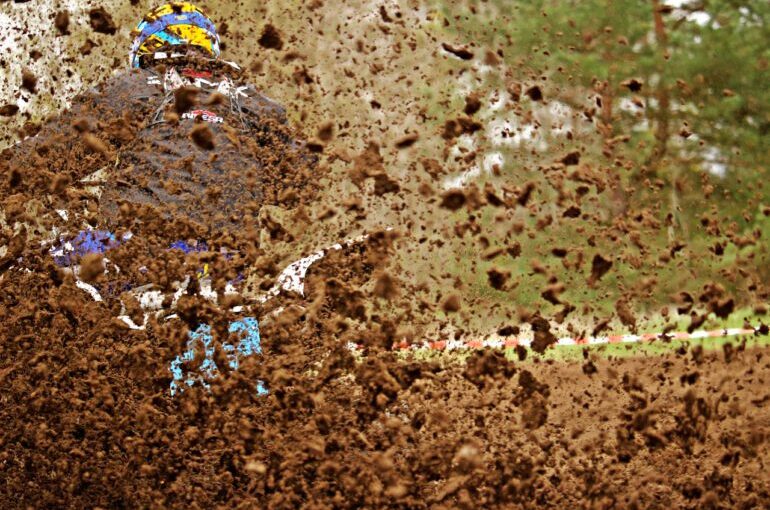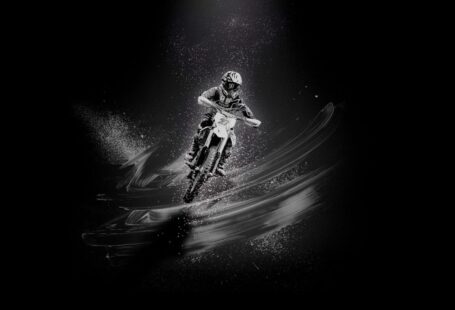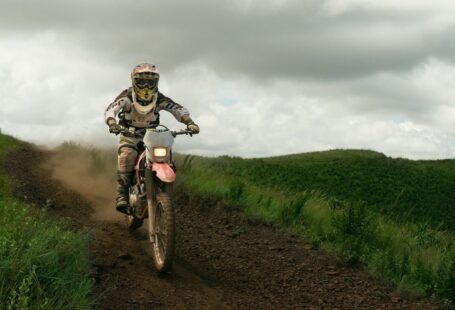Jonathan is the best kind of GrabCADr. He offers advice on designs, creates models that help others join design and engineering challenges, and shares his CAD knowledge. We got the chance to learn about his project, Dirt Force Motorcycles, and how he got started with CAD.
How would you describe your work?
I would describe myself as well rounded. I am one part artist, one part inventor, one part designer, one part engineer and one part mad scientist. If I had to describe my strength, it would be creativity. Whether it is a drawing or a consumer product design, I really love to take a vision and bring that magic out into the real world to share with everyone. I’m also detail oriented. Even if it’s just an exercise in design aesthetics, I always put the necessary details into projects to really add a sense of realism. People tell me they can always tell it’s my design just by the way it looks.
What motivates you to volunteer your time to help others?
The thing that attracts me the most about design and engineering is the CHALLENGE! It’s kind of like digging for gold, it’s super tough, you work hard, there’s tons of risk but there’s always that one pocket of gold that’s out there. You just have to work hard enough to discover it. When you do, it’s one of the most beautiful experiences in the world.
When you [discover an engineering design solution], it’s one of the most beautiful experiences in the world.
It really becomes about finding that holy grail of an engineering design solution, that one magic solution that solves every problem of the challenge in one fell swoop. This is just one of the reasons why I’m always willing to help others out with their designs. It really is about finding the best design, sharing knowledge to provide the best solution to the problem at hand. I also like to see what other people come up with for their designs, it’s fascinating, we all think differently.
How did you overcome your toughest engineering challenge?
By far the toughest yet most rewarding engineering challenge I’ve had was my DHX motorcycle project. I’ve always been into dirt bikes and motorcycles but I wanted to build a bike that was really lightweight and handled like a mountain bike for tight trail riding. When I finished university in 2004, instead of backpacking in Europe, I bought a welder and invested in some tools and equipment. Then, I set out to build my own custom lightweight dirt bike frame.
Getting from an idea to a prototype
I started out with sketches on a large paper on my basement wall, which actually worked amazingly well. I made all my templates out of spare cardboard, built jigs out of steel, made molds out of urethane and wood, and got to work. By 2008 using my small basement shop, I built a prototype frame called DHX1.0. The “DH” means downhill and “X” means cross. The frame was purely a prototype design made from crudely welded 6061 aluminum tubing and plate, but it worked. It allowed me to test out the concept. It also gave me an awesome chance to learn how to weld aluminum, this hands-on experience was invaluable.
Creating a real world product taught me to:
- Weld steel and aluminum.
- Design for structural integrity.
- Design proper geometry.
- Apply ergonomics and component layout.
- Troubleshoot engineering issues.
- Choose materials.
- Launch a product on a website.
Getting from prototype to iterated design
The bike was a blast to ride and that prototype frame remains the main bike that I use to this day. I used my prototype to weed out engineering and structural issues. I would push the bike, jump it and see what broke. Then, I would make adjustments and fix it accordingly. From this process I ended up doing a redesign called the DHX2.0. This frame was the result of all the improvements I had done to the original prototype over the span of a few years. I had to make decisions on things like increasing the engine cradle tubing from 1” to 1.25” square, using thicker plating and gusseting in certain areas and many other decisions had to be made. A big challenge, but a great hands-on learning experience also.
The challenge I face with this project moving forward this year is to bring the design into CAD software and make things friendly for manufacturing. The ultimate goal is to get funding so that the components can be cold forged out of aluminum. As I move into designing the frame with CAD, I’m always looking for help from like minded engineers and designers and even investors! Visit Dirt Force Motorcycles, I still have two DHX2.0 frames for sale and will be phasing that frame design out to move onto the next generation of frames designed on CAD. Feel free to send me a message anytime.
The evolution of idea to prototype to iterated design
What are your must have CAD tools?
3D CAD tools
After struggling with other CAD software for years, I stumbled across SOLIDWORKS and in five days I was producing full-blown, detailed engine models that I could use for my frame designs. So I would have to say I’m a dedicated SOLIDWORKS man, now.
2D and presentation tools
For 2D, I use good, old Photoshop CS5. If you want to do good presentation of your designs, then the Adobe Suite is a must! I use photoshop for everything like crop, gradient, fade, effects. It’s just an essential tool for any graphic layout work. I also use Adobe Illustrator to trace drawings or logos and then import them into 3D CAD. I also make use of this awesome little free graphic editor called GIMP. It does basically everything Photoshop does but it’s freeware. It has this cool feature where it will automatically make an image seamless. I use this feature a lot for texture mapping.



